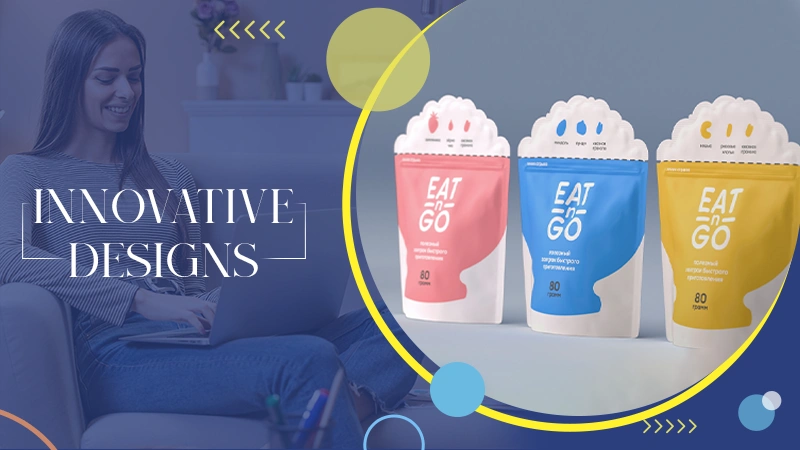How to be a Successful Interior Designer
Interior design is a fascinating field that combines art, creativity, and practicality to create visually appealing and functional spaces. As an interior designer, your primary goal is to transform ordinary rooms into extraordinary spaces that meet the needs and preferences of your clients. This profession requires a unique blend of technical knowledge, artistic vision, and excellent communication skills. In this article, we will explore the essential skills and steps to become a successful interior designer and provide guidance on how to navigate the challenges and opportunities in this rewarding career.
Essential Skills for a Successful Interior Designer
To excel in the field of interior design, you must possess a variety of skills that will enable you to create beautiful, functional spaces for your clients. Here are some of the most important skills that you need to master:
- Artistic vision: A successful interior designer must have a keen eye for color, texture, and composition. You need to be able to visualize how different elements will come together to create a cohesive design that reflects your client’s tastes and needs.
- Technical knowledge: In addition to artistic talent, an interior designer must have a strong understanding of architectural principles, materials, and building codes. This knowledge will help you create spaces that are not only visually appealing but also safe and structurally sound.
- Communication skills: Effective communication is crucial in the interior design profession. You need to be able to listen to your clients, understand their needs, and convey your ideas clearly and persuasively.
- Problem-solving skills: Design projects often involve unforeseen challenges or limitations. A successful interior designer must be resourceful and adaptable, finding creative solutions to design problems and making the most of available space and resources.
- Project management skills: Interior designers often juggle multiple projects at once, so it’s essential to be organized and efficient. You need to be able to manage your time and resources effectively and stay on top of deadlines and budgets.
The Role of Creativity in Interior Design
Creativity is at the heart of interior design. As an interior designer, your role is to push the boundaries of conventional design concepts and create innovative solutions that meet the unique needs and preferences of your clients. This requires a deep understanding of the principles of design, as well as the ability to think outside the box and envision new possibilities.
To foster creativity, you should continually expose yourself to new ideas and inspiration. This can come from a variety of sources, such as design magazines, art galleries, and even nature. By staying curious and open-minded, you will be better equipped to develop original and imaginative design concepts that set you apart from the competition.
Another key aspect of creativity in interior design is the ability to experiment with different materials, textures, and colors. Don’t be afraid to take risks and explore unconventional design solutions – this is what sets truly innovative designers apart. Remember that your ultimate goal is to create spaces that are not only visually stunning but also functional and comfortable for our clients.
Education and Training for Aspiring Interior Designers
To become a successful interior designer, you will need a solid foundation in design principles, as well as specialized knowledge in areas such as space planning, materials, and building codes. There are several educational paths you can take to gain the necessary skills and qualifications:
- Bachelor’s degree in interior design: A four-year degree program in interior design will provide you with comprehensive knowledge of design principles, history, and techniques, as well as hands-on experience through internships and design projects. This is the most common path for aspiring interior designers.
- Associate degree in interior design: A two-year associate degree program can provide a solid foundation in design principles and techniques, as well as opportunities for hands-on experience. This option may be suitable for those who want to gain entry-level positions in the field or who plan to continue their education with a bachelor’s degree later on.
- Certificate programs in interior design: Certificate programs typically focus on specific aspects of interior design, such as space planning, materials, or computer-aided design (CAD). These programs can be a good option for those who already have some design experience or education and want to deepen their knowledge or specialize in a particular area.
In addition to formal education, aspiring interior designers should also seek out internships and work experience opportunities. This will help you build a strong portfolio and make valuable connections in the industry, which can be crucial for your future success.
Building a Strong Interior Design Portfolio
Your portfolio is your most valuable tool as an interior designer. It showcases your skills, creativity, and experience, and allows potential clients and employers to see what you are capable of. Therefore, it’s essential to invest time and effort in creating a professional and visually appealing portfolio that highlights your best work.
Here are some tips for building a strong interior design portfolio:
- Include a diverse range of projects: Your portfolio should demonstrate your versatility as a designer, so include a variety of projects that showcase different styles, materials, and design challenges. This will show potential clients that you can adapt to their specific needs and preferences.
- Highlight your design process: Your portfolio should not only showcase your finished work but also give insight into your design process. Include sketches, mood boards, and any other materials that demonstrate your creative thinking and problem-solving skills.
- Include detailed information: For each project in your portfolio, provide a brief description that outlines the client’s needs, your design concept, and any unique challenges or solutions. This will help potential clients understand the context of your work and appreciate your ability to meet specific design goals.
- Present your work professionally: Your portfolio should be visually appealing and easy to navigate, with high-quality images and a consistent layout. Consider creating a digital portfolio that can be easily shared via email or social media, as well as a printed version for in-person meetings and interviews.
Networking and Collaboration in the Interior Design Industry
In the interior design industry, networking and collaboration are vital for building a successful career. By connecting with other professionals, you can learn from their experiences, stay updated on the latest trends and innovations, and discover new opportunities for growth.
Here are some strategies for effective networking and collaboration in the interior design field:
- Attend industry events: Conferences, trade shows, and workshops are excellent opportunities to meet other designers, suppliers, and clients. Make an effort to attend these events regularly and actively engage with attendees to expand your network.
- Join professional associations: Becoming a member of a professional interior design association, such as the American Society of Interior Designers (ASID) or the International Interior Design Association (IIDA), can provide access to valuable resources, networking events, and continuing education opportunities.
- Collaborate with other professionals: Seek out opportunities to collaborate with other designers, architects, and contractors on projects. This not only expands your network but also allows you to learn from the expertise of others and develop a more well-rounded skill set.
- Build a strong online presence: Utilize social media platforms and online design communities to showcase your work, share ideas, and connect with other professionals. This can help you to establish yourself as a knowledgeable and engaged member of the interior design community.
Staying Updated with Interior Design Trends
As an interior designer, it’s essential to stay updated on the latest design trends, materials, and technologies to ensure that your work remains fresh and relevant. Here are some strategies for staying on top of industry developments:
- Subscribe to design magazines and blogs: Regularly read interior design publications, both in print and online, to stay informed about the latest trends, products, and innovations.
- Follow industry influencers: Keep an eye on the work of prominent interior designers, both locally and internationally, to gain inspiration and stay updated on current design styles and techniques.
- Attend trade shows and conferences: Trade shows and conferences provide an excellent opportunity to discover new products, materials, and technologies, as well as to network with other professionals and learn from their experiences.
- Participate in continuing education: Enroll in workshops, seminars, or online courses to deepen your knowledge and skills in specific areas of interior design, such as sustainable design, lighting, or CAD software.
Balancing Functionality and Aesthetics in Interior Design
A successful interior designer must strike a delicate balance between aesthetics and functionality. While creating visually appealing spaces is undoubtedly important, your primary responsibility is to ensure that your designs meet the practical needs and preferences of your clients. This requires careful consideration of factors such as space planning, ergonomics, and accessibility.
To achieve this balance, focus on understanding your client’s lifestyle, needs, and preferences. Consider factors such as how the space will be used, the number of occupants, and any specific requirements or limitations that may influence the design. By incorporating this information into your design process, you can create spaces that are not only beautiful but also comfortable, practical, and tailored to your client’s needs.
Why Use Materials as Window Films
Window films are versatile and cost-effective materials that can enhance the functionality and aesthetics of interior spaces. They offer several benefits for interior designers, including:
- Energy efficiency: Window films can help to reduce energy consumption by blocking solar heat gain and reducing heat loss through windows. This can result in lower heating and cooling costs for your clients.
- Privacy: Bathroom window privacy film can provide privacy without sacrificing natural light, making them an excellent solution for spaces such as bathrooms, offices, or bedrooms.
- UV protection: Window films can block up to 99% of harmful UV rays, protecting your clients’ furniture, flooring, and artwork from fading and damage.
- Design flexibility: Available in a wide range of colors, patterns, and textures, window films can be used to create unique design accents, such as frosted glass effects, decorative patterns, or custom graphics.
Always buy reliable products such as those sold by Stick Pretty.
Overcoming Challenges in the Interior Design Career
Like any profession, the interior design field presents its own set of challenges and obstacles. Here are some common challenges and strategies for overcoming them:
- Navigating client expectations: It’s crucial to establish clear communication with your clients to ensure that their expectations are met. Be proactive in discussing their needs, preferences, and budget, and provide regular updates throughout the design process.
- Dealing with difficult clients: Sometimes, you may encounter clients who are challenging to work with or who have unrealistic expectations. In these situations, remain professional and assertive, and be prepared to compromise when necessary to find a solution that satisfies both parties.
- Staying competitive: The interior design industry is constantly evolving, and it’s essential to stay updated on the latest trends and innovations to remain competitive. Invest in continuing education, attend industry events, and network with other professionals to stay informed and build your reputation in the field.
- Managing time and resources: As an interior designer, you may be responsible for managing multiple projects simultaneously, which can be challenging. Develop strong organizational and project management skills to ensure that you stay on top of deadlines, budgets, and client expectations.
Future Prospects for Interior Designers
The interior design industry offers a wealth of opportunities for creative, talented individuals who are passionate about transforming spaces and improving the lives of their clients. By developing essential skills, investing in education and training, and staying updated on the latest trends and innovations, you can build a successful and fulfilling career in this dynamic field.
As the demand for well-designed, functional spaces continues to grow, the future prospects for interior designers remain promising. By focusing on sustainability, accessibility, and innovative design solutions, you can position yourself at the forefront of the industry and create a lasting impact on the spaces you design.
Now is the perfect time to embark on your journey as an interior designer, and with determination, hard work, and a commitment to excellence, you can achieve great success in this rewarding profession.
Follow Us
Latest Post















